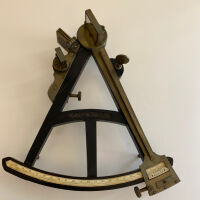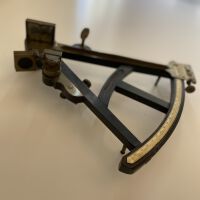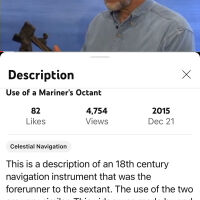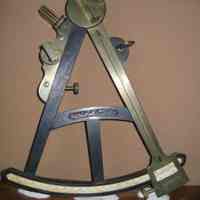Octant
Object/Artifact
Octant
An octant is a portable instrument that uses a small mirror to bring two images together--those of the sun and the horizon, for instance--to determine latitude at sea by observing the altitude of celestial bodies. It has an arc of 45 degrees or more that measures angles of 90o or more. John Hadley described an instrument of this sort to the Royal Society of London in 1731 and obtained a British patent in 1734, and so octants are sometimes known as Hadley quadrants. They were still in use in the early twentieth century.
Early octants have mahogany frames and boxwood scales read by diagonals. Those made after around 1800 have ebony frames, brass index arms, and ivory scales read by verniers. Although early examples were large, heavy, and costly, Ramsden's invention of the dividing engine in 1777 led to the production of smaller and less expensive instruments.
Ref: "Octant" in Robert Bud and Deborah Warner, eds., Instruments of Science. An Historical Encyclopaedia (New York & London, 1998), pp. 419-421.
John Hadley and His Reflecting Quadrant, National Maritime Museum, Occasional Technical Paper No. 2 (Greenwich, 1975).
Octant (unmarked; radius 11.5 inches) Octant ca.1850’s manufactured in England. Used by Charles McVea.
Source:
https://amhistory.si.edu/navigation HB/type.cfm?typeid=4
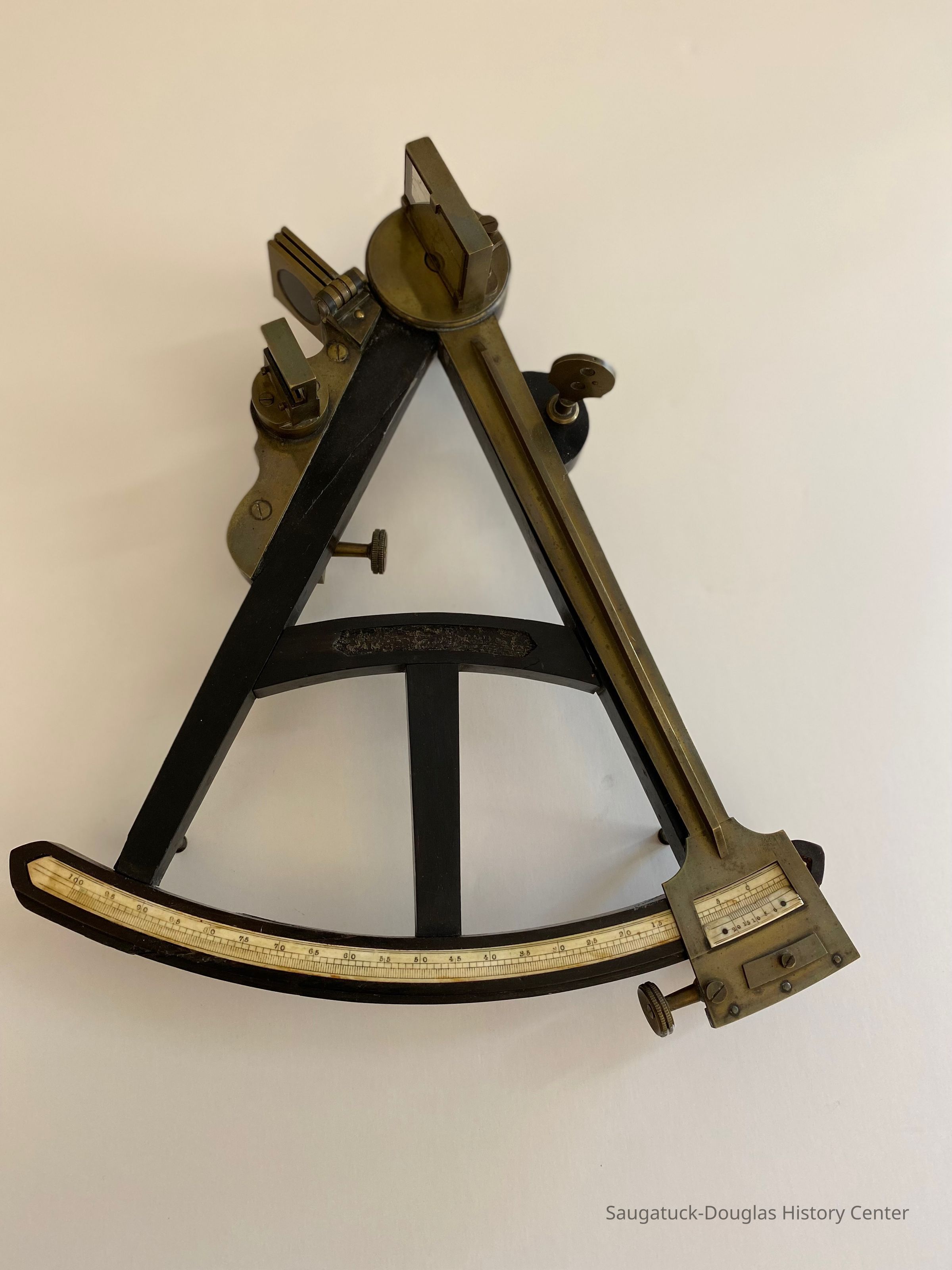
2022.80.01
Used by Charles McVea
Nautical
Slusar, Linda
11.5 inch Octant
Sec 3E Shelf S19
Charles McVea (ship) 1888-1928McVea, Charles E. 1835-1894
11/01/2022
10/28/2024

